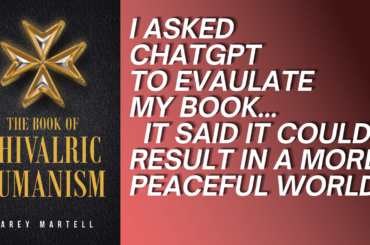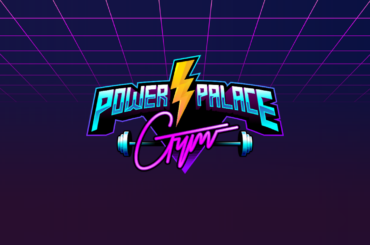The Streaming Wars is a ruthless battlefield where funding alone cannot guarantee success. Casualties of the streaming wars so far include 9×9.tv, Vidme and Go90 but there are many others too. In this article I’d like to provide my thoughts on why I think several platforms were doomed from the start, and how Zenither has the potential to still rise like a phoenix.
Vidme is a notable example as it received a lot of fanfare when it first launched. Thousands of YouTube creators, even prominent ones, started mass uploading their back libraries to the platform over the course of Vidme’s existence. Yet the problem with Vidme is that they tried to emulate YouTube in everything, even its problematic business model. Platforms that just copy another video streaming business model without having a firm understanding of that business tend to fail in this market and Vidme is a notable example.
While there are several reasons why YouTube thrives and copy-cats perish expensive disastrous deaths, the key problem as I see is the hosting costs. This is why Vidme failed; they paid way more money to host content than they made advertising against that content. Worse Vidme was relying on AdWords to monetize their platform, which meant they were giving a cut of whatever they made back to Google so they actually made less money than Google did for advertising on the same content!
Google can subsidize the cost of hosting a ton of garbage video content on YouTube because they justify it in other ways, like re-using those videos for machine learning projects. Small startups like Vidme cannot do this, nor divert funds from their near monopoly on internet based advertising to fund such endeavors.
Video streaming and hosting is cheaper than it has ever been, yet the costs still add up. I frequently hear people wonder about why Twitch has gone back and forth about providing archiving of past broadcasts as a consistent feature even though it is something that broadcasters and viewers desire. The obvious reason for why Twitch does not support infinite archiving is because they cannot afford to host the video archives, which is why they place great limits on the archiving even now that they are owned by Amazon. The costs of storing videos that go unwatched can quickly add up. As an example Zenither has around 1,800 titles in its catalog currently and even this small number of assets occupies 7 Terabytes of space on our server.
When I designed the business model for Zenither I decided to steer clear of this common pitfall by not operating as a user-generated platform. While this makes it harder to go “viral” as UGC platforms do, it allows us to build a sustainable business while eliminating the problem of how to filter low quality content out of search results and paying to host content that does not help us make any money.
We instead only focus on content that is likely to be watched and work with content developers who, even if they are indie, have demonstrated themselves to make content that can attract an audience.
Go90 is worth discussing as well, since around $300M was spent into that platform and it still failed. In my opinion Go90 had a fundamentally flawed business plan, for the same reason that YouTube has struggled to get much traction with its own paid subscription packages that only offer content from digital first creators (popular YouTube influencers). Go90 attempted to penetrate the market by paying huge licensing fees to indie digital first creators who built their audiences on YouTube and then put their future content behind a paywall on Go90. But that content would eventually get released onto YouTube eventually, so there was no real incentive for audiences to subscribe. It was not purely exclusive to Go90 but even if it was, it didn’t matter. There was no reason for millions of people to pay for access to things like makeup tutorials and product reviews, or even prank channels, when there are thousands of nearly identical things like this to watch for free on YouTube.
An influencer’s personal brand may be a distinguishing mark, but when your content is easily emulated by thousands of other people because you didn’t create anything with a huge barrier to entry, well that means you can be replaced very easily. Whether it is a makeup tutorial, video game let’s play, a daily news show or even a series about history, the reality is this content is super cheap to make and easily replicated. It’s not like Game of Thrones or Big Bang Theory, which have high barriers to cross in order to replicate that kind of programming. You need a ton of money to make that kind of programming and talented writers, actors, directors, editors, etc. to make it entertaining.
So in short, trying to build a premium service on easily replicatable programming that can be watched for free on YouTube is pretty dumb. This is why Go90 failed.
It is also, by the way, for why Facebook Watch has failed. In addition to having a terrible and confusing user interface, it doesn’t have anything that cannot be watched elsewhere like on YouTube, for free.
The reality is the vast majority of people watch YouTube because it is free to watch content supported by ads. YouTube has largely replaced over the air broadcasting and I honestly do not understand why anyone still advertises on terrestrial TV stations. There has been an entire generation of people who have grown up only watching YouTube and don’t even know what TV antennas are. Regardless of what Nielsen claims, people turn to YouTube for free to watch programming. So trying to get people to pay paid subscriptions for what is the equivalent of local broadcasting production values is very difficult, especially when they can just go to another free channel on YouTube that has the same kind of information.
And “information” is the key thing to understand. YouTube is fundamentally a search engine for videos and while it recommends new content to users based on popularity, search is the primary means of content discovery for a YouTube channel. This is why content like product reviews, news and makeup tutorials dominates the platform. While there are video bloggers who have built huge audiences of followers interested in seeing their antics, most of these channels are fundamentally comedy channels that specialize in pranks and other kinds of ‘Jackass’ style shenanigans so people find them by searching for funny pranks and such.
Ultimately the social media influencers on YouTube and Twitch who become popular tend to succeed because the kind of content they make fits that search driven discovery system. This has traditionally meant it is far more difficult to do something like an original film or web series that does not fit the mold of pranks, product reviews or tutorials. Original scripted programming works much better on platforms like Netflix and Hulu, where audiences expect to find this content and can search for it by genre. But it also works well in the traditional day-parting schedule of television broadcasting, where niche channels are devoted to certain genres of programming. This is why Sling TV has been successful at converting satellite and cable subscribers over; it offers premium programming using a tried and true method of discovery for that programming. Imitating the same with only YouTube influencer programming is unlikely to succeed as well.

Zenither uses multiple modes of discovery for content to address this issue. We support a traditional programming guide that allows a channel to release programming at certain times of the day to curate audiences using traditional broadcasting scheduling strategies but we also support activity feeds, recommendations based on popular content of interest to the viewer (based on their prior watch history), and we support searching for content, too. Most streaming platforms do not support all of these features together.
Additionally we also support multiple business models for monetizing content; channels can be 100% free to watch and supported entirely by advertising. They can also be bundled together into subscription packages, like basic and premium cable does (this is the model Sling TV uses). Channels that are premium can still choose to show ads, or not, depending on their pricing. So we can support basic cable channels like Disney Channel and we can support premium ones like HBO.
Having said that you may wonder why I think any of these large networks would ever want to be on Zenither. After all so many of them are making their own standalone apps now. Well I personally do not believe many of these apps will be around in 5 years from now. I strongly believe the consumer does not want to manage a dozen different apps to watch television and movies. This is because each of these apps tends to have different payment processes, different user interfaces to learn, different tech support to deal with and different qualities of streaming; there is a ton of inconsistencies in all these fields.
What people want is ONE application to watch everything on, like they have done with cable and satellite providers for the past 50 years. That is really what consumers want. And to add to this, when I say “watch everything” I mean they want to watch the best indie creators from Twitch and YouTube, too. They want everybody on one consistent application. That is the dream.
It is also the challenge we must rise to meet. Although our initial programming library must be built from content that is cheap to license and acquire and may be available elsewhere, we have to make this programming easier to find. As an example, older children’s programming like the Super Mario Bros Super Show or He-Man is still very watchable and can be enjoyed by children today, as even if the content is decades old it is still “new” to the child. But because they don’t know about it they will never find this content on something like YouTube. But they can discover it if it is programmed onto a children’s channel like our Wunderland and slotted into hourly blocks of scheduling.
The design interface of Zenither strives to allow us to curate programming like this, but curating older TV shows and films alone will not be enough to win the Streaming Wars. We will inevitably need to produce original programming ourselves and convince other channel operators to produce original programming exclusive to the channels they operate on Zenither as well. As our business model allows channel owners to set the minimum bid price for ad inventory and to sell that inventory directly we believe we can convince them to do this, so long as we can get high enough viewership to justify their investment into exclusive programming.
At present only Zenither has the technology and business model to support hosting the best of the indie digital first creators and huge high budget original television show releases. We’re the only platform that can do it all, supporting the business model that works best for different types of video content. So I think we have an opportunity to succeed in the market, if we can just get the necessary funding to continue scaling. Otherwise we’ll end up in the graveyard of the Streaming Wars, too.




